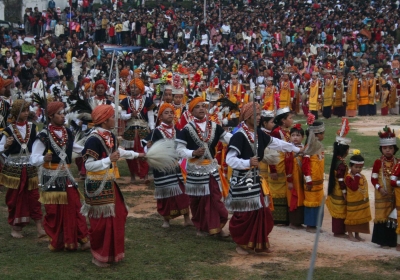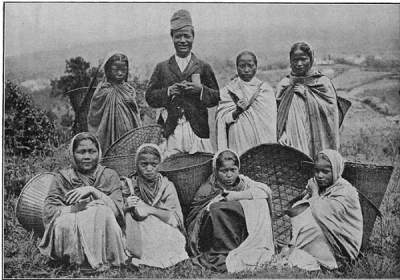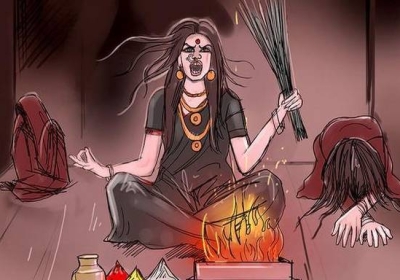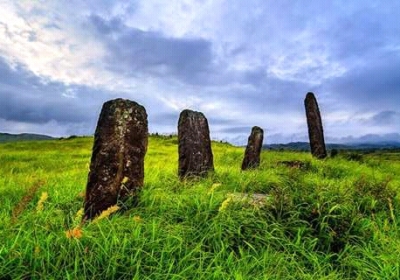Khasi Heritage: Ka Nong or Karma

By Raphael Warjri
The cosmic relations between celestial beings and the creatures on earth transcend the reality of imaginations, speculations, anticipations and fantasy. The reflection of celestial images on the water surface transpires into illusion, mirages and dreams. The tortoise is a lazy and ugly creature always in the riverbed smeared with mud waiting for easy prey. She would never venture anywhere and at night she lazed in the weeds, watching the images of the moon and stars on the placid water surface. Stars were bathing in the pond as the waves were moving in rhythm with the gentle breeze, but the lazy tortoise was unmoved. Sometimes, she assumed that water fairies were taking a bath, and would swim and dive to the bottom of the river in search of the handsome fairies. Among all the celestial bodies, only Lur Mangkara, the morning star noticed her intense observation of the images and was fascinated by the shiny shell. The morning star was impressed by her dedication and patience, watching the beauty of the images in the placid water of successive dark nights. Lur Mangkara, the most handsome star in the cosmos never noticed the ugly creature at night in the surrounding darkness, and intended to marry her without ensuring his orientation. The celestial community were apprehensive about his sudden decision, particularly the uncertainty in the far away territory. However, he was determined to pursue his immoral desire and took along an enormous amount of wealth.
The tortoise, Ka Panshandi was not only happy, but remained indolent and careless in her behaviour towards her husband, Lur Mangkara, the morning star. He would plead her to cultivate a certain amount of decency in her appearance and actions, but she remained obstinate in spite of his repeated request and tolerance. Her adamant attitude compelled him to gather all his wealth and flee away to his celestial dwellings. To her utter dismay, Panshandi had never expected such unfortunate consequences and repented for her lethargy and vanity. Since that incident, every day at dusk she would wait at the riverbed with her head emerged from the shell looking up to the sky with a fervent appeal to Lur Mangkara to return. It was too late for her to anticipate any further favour and her hope of a lavish lifestyle was ceased forever. This is a parable for the society that was relevant for generations. The beauty of nature prevails everywhere, whether in the sky or in the sprawling landscape and even underneath the earth, where an enormous variety of vibrant substances are embedded and available to showcase to the ardent explorers of real beauty.
The queen of plants and vegetation, Shilakoina has a beautiful daughter, Litiakoina, the princess of flowers. The floral princess likes to stroll in the shades of rocky cavity where the garden of Amirphor flowers grew. The king of the subterranean, Jama was riding the flaming chariot of Pegasuses, while she was playing with the butterflies that pollinate the flowers. Jama soared his flaming chariot into the meadow and with his dark glowing eyes leered at Litiakoina. Soon, the floral princess is up in the air, seeing the rapid receding beds of flowers without any knowledge that she was already captured by the invisible king of the subterranean riding the flaming chariot. The robe of Litiakoina was detached and flew in the air due to the strong wind and landed in the Amthirthir stream. In fantasy, the floral princess, Litiakoina reached the underground kingdom and was forced to marry Jama against her will. Her mother, Shilakoina was surprised that she had disappeared without her knowledge and a search operation was launched to locate the floral princess. Every effort to find her whereabouts was in vain and the voice of anguish of the mother echoed throughout the length and breadth of the earth, but there was no sign of her daughter on the horizon.
The surface of the earth became barren and all the plants withered because Shilakoina was tormented by the disappearance of her vibrant floral princess. The queen of plants wandered in the wilderness for ages and was unable to care for the environment. In one of her desperate attempts, Shilakoina was very thirsty and arrived at the abode spring water, Thrintintin, where the Amthirthir stream flows. She discovered that Thrintintin had witnessed Litiakoina quenching her thirst, with crystal water from the flowing stream in the underground and went back to the palace of Jama. She was pleasantly surprised to find out that her daughter, Litiakoina was still alive, and did not lose hope of bringing her back. Shilakoina went to the Sylvan deity, Ryngkew at the summit of Kynthong hillock and prayed for his support to facilitate the rescue operation of her daughter, particularly when drought has swept over the entire earth. The sylvan deity, Ryngkew, negotiated with Jama and resolved to take her out occasionally, since she was already married to the king of the subterranean. Since then, Litiakoina, the floral princess, appears twice a year during the spring and autumn seasons to provide nourishment to the flowers of the world, and her queen-mother resumes her duty to the sustenance of the environment.
(Rev H Elias).
The parables of these tales render lessons in human life about the reward of personal conduct, behaviour and actions towards fellow humans in society. The depth of affection, passion and devotion to anybody is expressed in gratitude and obligation that the reward is certainly achieved according to the gravity of the respective attitude and action, which in Khasi folk tradition is known as Ka Nong or the universally accepted term, Karma in Sanskrit. This is one of the reasons that, in the Khasi folk theology, there are no commandments from the divine force to direct humans and society towards the right path, because humans are given the liberty to think, act and conduct according to the free will of an individual or community. The three codes of ethics, Kamai ia ka Hok, Tipbriew Tipblei and Tipkur Tipkha are the fundamental principles of human conduct and behaviour in life.







